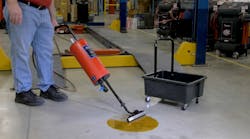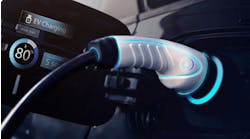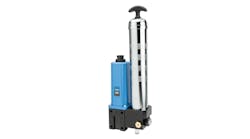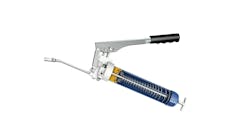The products used when handling a spill can be broken down into two categories: prevention and containment/cleanup. The materials used for preventing spills are referred to as secondary containment.
“Secondary containment is a heightened level of protection for drums, totes, tanks, and other primary containers. If any primary container holds a hazardous substance, the U.S. Environmental Protection Agency (EPA) requires them to have secondary containment,” explains Robin Thornett, marketing manager of SpillTech, a manufacturer of high-performance polypropylene sorbent products for industrial maintenance and spill cleanup.
This secondary containment device is a fail-safe for the drums, totes, and other containers. If one of those containers fails, fleets won’t have to worry about a potentially hazardous spill; the secondary containment device will confine the liquid. This not only keeps the workplace safer and the environment free from contaminants, but also makes cleanup much faster and recycling of the spilled substance much easier.
Products used for this sort of containment traditionally include pallets, decks, berms, dikes, and concrete walls, but a sloped room where the liquid is able to accumulate at one end until the spilled substance is cleaned can also be utilized, Thornett notes.
As for the second category of products – containment/cleanup – these tools have changed greatly over the years.
“In the past, shop workers would likely reach for a bag of kitty litter or other clay-based loose absorbents,” Thornett says. “But, those types of products tend to create even more mess; take time and energy from workers who should be doing something else; are dusty and therefore hazardous to health; [and are] heavy and hard to dispose of.”
Needless to say, those methods of cleanup are rarely used today. When containing a spill, absorbent socks, booms, non-absorbent dikes, and flexible barriers are used to stop the spill from spreading. Thornett notes this is arguably the most important step in cleaning a spill because the faster the spill is contained the smaller the area affected, meaning a quicker cleanup time.
Once the spill has been contained, fleets should use polypropylene pads, socks, and pillows to soak up the liquid. In some cases, a wet vacuum can be used to clean spills, but it is not advised to use a vacuum on flammable liquids such as gasoline. For high-volume spills, pillows should be used to clean the majority of the mess, followed by pads to clean what remains of the spill. If the spill is small to start with, skip the pillow and just use a pad.
Fleets should create a spill plan outlining the processes, containers, tanks, and equipment that could leak or spill, and the plans and procedures in place to prevent spills and respond to them in order to figure out what products will best suit their needs for handling spills.




